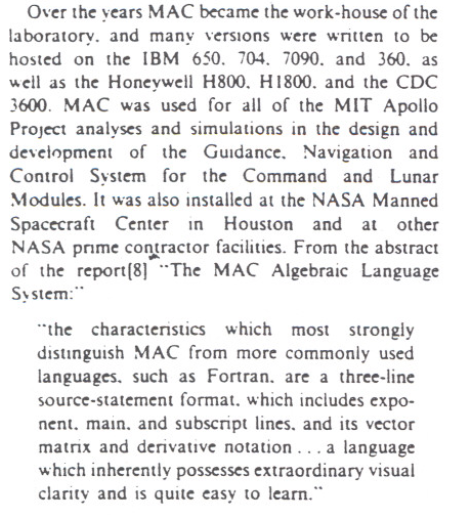From this answer from @Mike Dunlavey:
The guidance computers for the command module and lunar landing module were each programmed in their own assembly language. The missions were exhaustively simulated on a large IBM 360 Model 75 computer, using a language called MAC-360 created by Hal Laning. It resembled Fortran in being mostly about mathematical calculations. It had a 3-line format for representing vector and matrix calculations.
From this answer from Mark Shulmann to the question "Why wasn't the Apollo 11 code written in higher programming languages like Fortran or COBOL?" asked on Quora:
The major reason was that compilers at the time did not generate code that was anywhere close to being as memory-efficient as what a programmer could produce in assembler (machine code).
The keypoint is that even with 36K, the programmers and hardware designers had to pull some crazy tricks to get the software to fit into the available memory. If they had used a high-level language, they likely would have needed far more memory to hold the software.
Finally, as Tony Flury points out in his answer, the AGC was a custom-designed architecture. There were no FORTRAN, COBOL, or ALGOL compilers available for it. If the software designers had wanted to use a high-level language, they would have had to write their own compiler for the AGC.
(Emphases by me)
Conclusion: mission simulations were exhaustively done using high-level language(s), but the program that ran on the AGC itself was written in assembly language and thus no compiler for this computer alone was needed.



